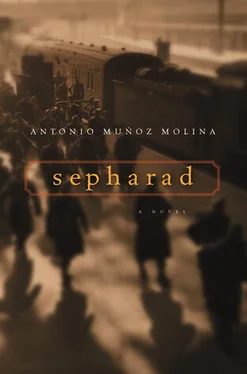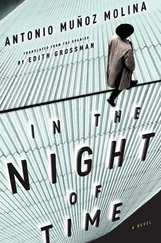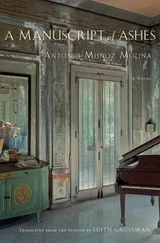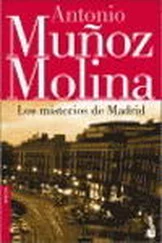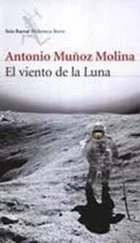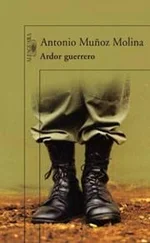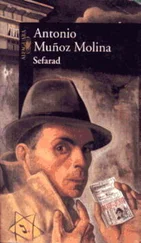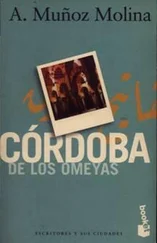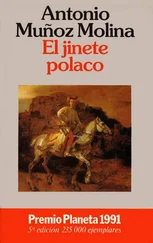BOTH MEN HAVE BEEN DEAD a long time now, the irascible tailor and the morose, bohemian sculptor, but the vengeful joke one played on the other survives in the grim, still green-lit features of the Judas of the Last Supper, even though with every Holy Week there are fewer people who can identify them as the tailor’s or who remember the stories of the past that Godino spins, whether inventing them out of whole cloth or just embroidering them, I don’t know. Nor would there be many who recognize the other real model for the apostles, the Saint Matthew who is turned toward Christ, half devout, half frightened, his raised eyebrows underscoring the amazement in his eyes, because this is the moment when the Master has just said that one of the twelve will betray him that night and everyone is alarmed and scandalized, gesturing wildly, asking, “Master, is it I?” In the midst of that uproar no one pays attention to the green, rancorous face of Judas or notices the swollen pouch of coins that our mothers pointed out to us when we were children and they held us up in their arms as the float passed by in the procession.
I didn’t need Godino to explain to me that the noble Saint Matthew, straight of back and red of cheek, was the living image of Mateo Zapatón, who thus had his instant of public glory on the same night of Holy Week that the bill-collecting tailor was covered with ridicule. After the sculptor Utrera, when he had money or the prospect of collecting some, had the measurements for a new suit taken in the tailor shop, he would cross Calle Real and order hand-cobbled shoes from Mateo, or during hard times he would bring old pairs to be repaired. But unlike the tailor, Mateo Zapatón never reminded Utrera of past-due bills, partly because of the man’s somewhat cowardly nature, which made him inclined to accept half measures, but partly too because he had a fervent admiration for the sculptor, which swelled to the point of abject gratitude every time the maestro came by his shop and stayed several hours to chat with him, offering him his blond-tobacco cigarettes and telling him stories of his travels through Italy and of his life in the artistic circles of Madrid before the war.
“Friend Mateo,” the sculptor would say, “you have a classic head that deserves to be immortalized by art.” Said and done. Mateo never charged Utrera a cent, but he considered the debt canceled when, with a surge of vanity and modesty, he saw his unmistakable face among those of the apostles, as well as his husky shoulders in a very typical posture: looking sideways and upward from the low cobbler’s bench where he spent his life. Being a penitent and a board member of the brotherhood of the Last Supper, could he imagine a greater honor than inclusion among those who supped with the Savior? Every characteristic, the entire persona of the evangelist saint, was of a prodigal fidelity, except for the beard, which the flesh-and-blood Mateo did not have, although at times he seemed to be on the verge of letting it grow, an inconceivable daring in those years of carefully tended mustaches and shaved faces. The tailor shop sat almost directly across from the cobbler’s shop, but whenever the aggrieved tailor met Mateo on the opposite sidewalk, he would lower his head or look away, his face greener and his nose more Semitic than ever, and Mateo, like so many others, would have to clamp his hand over his mouth to keep from exploding with laughter, his cheeks flaming a bright red more appropriate for a giant figure in Valencia’s festivals than for the image of a pious evangelist.
IT GAVE ME A LITTLE START of pleasure to see that face in the middle of a hostile city, a face tied to the sweetest memories of my hometown and childhood. When I was a boy, my mother often sent me to the door of Mateo Zapatón, who without knowing anything at all about me used to pat my cheek and call me Sacristan. “Mercy, Sacristan, this pair of half soles didn’t last very long this time!” “Tell your mother I don’t have change, Sacristan. She can pay me when she comes by.” The shop was very narrow and high-ceilinged, almost like a closet, and it opened directly onto the street by way of a glass door, which Mateo closed only on the most severe winter days. All the available space, including the sides of the chest he used as a worktable and counter, was covered with posters of bullfights and of Holy Week, the two passions of this master cobbler, glued-on posters, yellowed by the years, some pasted over others, announcements of corridas celebrated at the beginning of the century or at last year’s fair, all in a confusion of names, places, and dates that fed Mateo’s chatty erudition. He was almost always surrounded by his troop of friends, with a cigarette or tack between his lips, or both at once, a tireless narrator of historic anecdotes from the world of bulls and famous taurine maneuvers, which he knew at first hand because the presidents of the corridas often asked him to act as an official adviser. His voice would break and his eyes ill with tears when he was recalling the doleful afternoon when he watched from a row of seats on the sunny side of the bullring in Linares as the bull Islero charged Manolete. “He’s going to hook you, don’t get so close,” he had shouted from his seat, and he bent forward as if he were in the plaza and cupped his hands to make a megaphone, his face tragic with anticipation, living once again the instant when Manolete could still have saved himself from the fatal goring, “the fateful goring,” as Godino always said when he imitated the madly waving arms of the impassioned cobbler as he told that tale. Godino always promised some great and mysterious story about Mateo, a secret about which only he knew the most delicious details.
I WENT UP TO MATEO there in Chueca Plaza, and he looked at me with the same broad, benevolent smile he had worn when he welcomed the shoppers and the circle of friends who gathered at his cobbler’s shop. I was moved to think that he recognized me despite how much I’d changed since the last time we saw each other. Just then another coincidence came to mind that linked him to my oldest memories and, without his knowing, made him a part of my childhood. In the space next to Mateo Zapatón’s was the barbershop my father used to take me to, the one where my grandfather always got his haircut and shave, Pepe Morillo’s shop, which was doing less and less business as his oldest customers died off and young people were letting their hair grow. Now his door was closed as tightly as Mateo Zapatón’s and the Judas-face tailor’s, like so many of the shops on Calle Real that once had been busy, before people gradually forgot to go by there, turning it, especially at night and on rainy days, into a ghostly, abandoned street. But in those days Pepe Morillo’s barbershop was as animated as Mateo Zapatón’s shoe repair, and often, on mild April and May afternoons, the clients of both shops would take chairs out on the sidewalk and smoke and talk in one single gathering, which was observed from the other side of the street, from the darkness of his empty shop, by the brooding tailor, who would wring his hands behind the counter and sink his head deeper between his shoulders, ever more closely resembling the Judas of the Last Supper, the misanthrope with the green face and hooked nose slowly pushed toward bankruptcy by the unremitting advance of mass-produced clothing.
My father, holding my hand, used to take me to Pepe Morillo’s barbershop (back then “hair salon” was a woman’s word), and I was so small that the barber had to put a little stool on the seat in order for me to see myself in the mirror and for him to be comfortable as he cut my hair. His face smelled of cologne and his breath of tobacco when he bent close with the comb and scissors, and he shaved my neck with a little electrical machine. I could hear his strong, fast breathing and feel the touch of capable adult fingers on the nape of my neck and on my cheeks, the rare pressure of hands that weren’t those of my mother or father, familiar yet strange hands, suddenly brusque when he doubled my ears forward or made me bend way over by pushing the back of my head. Every time he trimmed my hair, almost at the end, Pepe Morillo would say, “Close your eyes tight,” and I knew he was going to trim the bangs to just above my eyebrows, cutting toward the middle of my forehead. Damp hair would fall on my eyelids, tickle my plump cheeks and tip of my nose, and the cold blades of the scissors would brush my eyebrows. When Pepe Morillo told me I could open my eyes now, I would be surprised by the round, unfamiliar face in the mirror, with protruding ears and straight bangs above the eyes, and also by my father’s smile as he looked approvingly at my reflection.
Читать дальше
